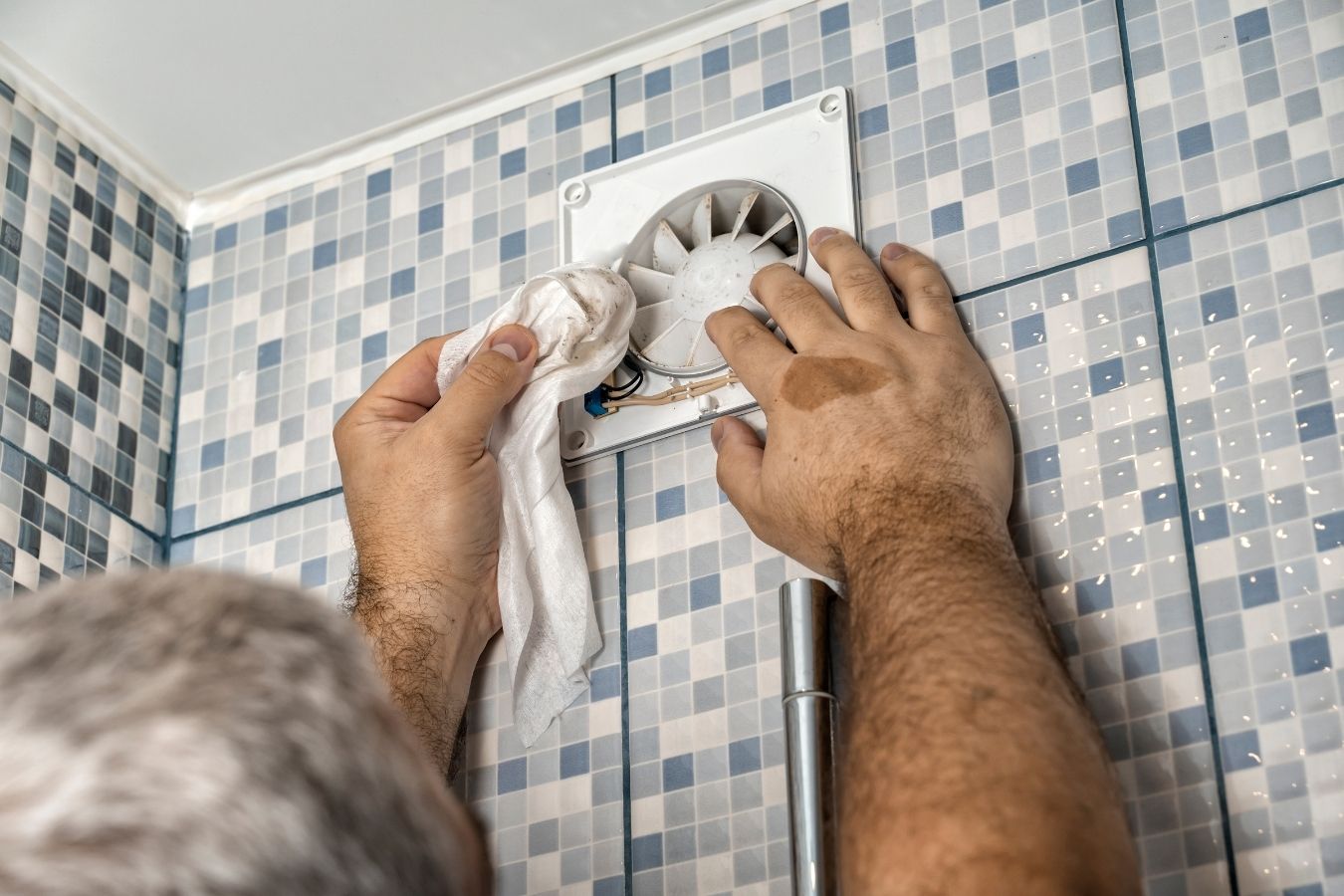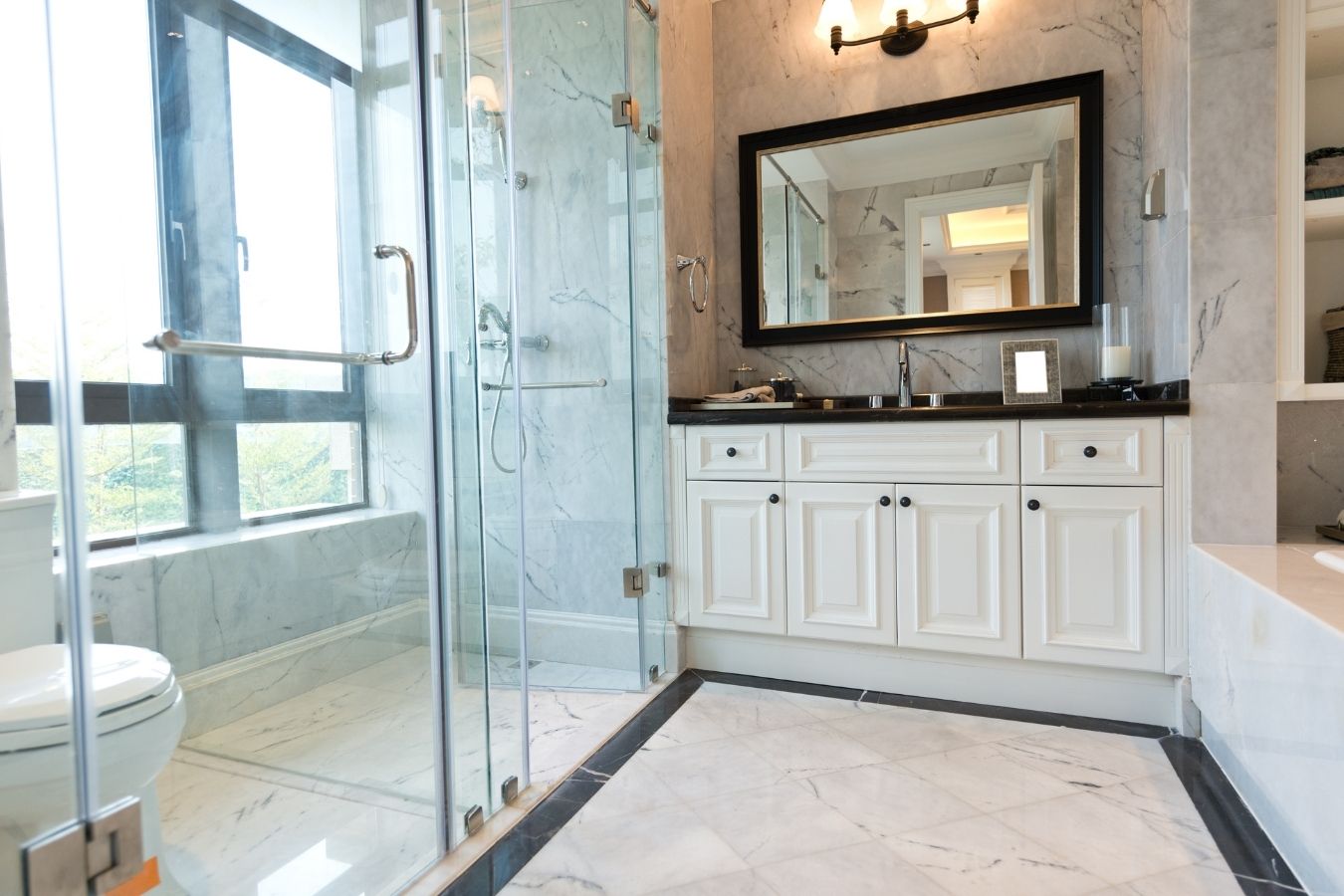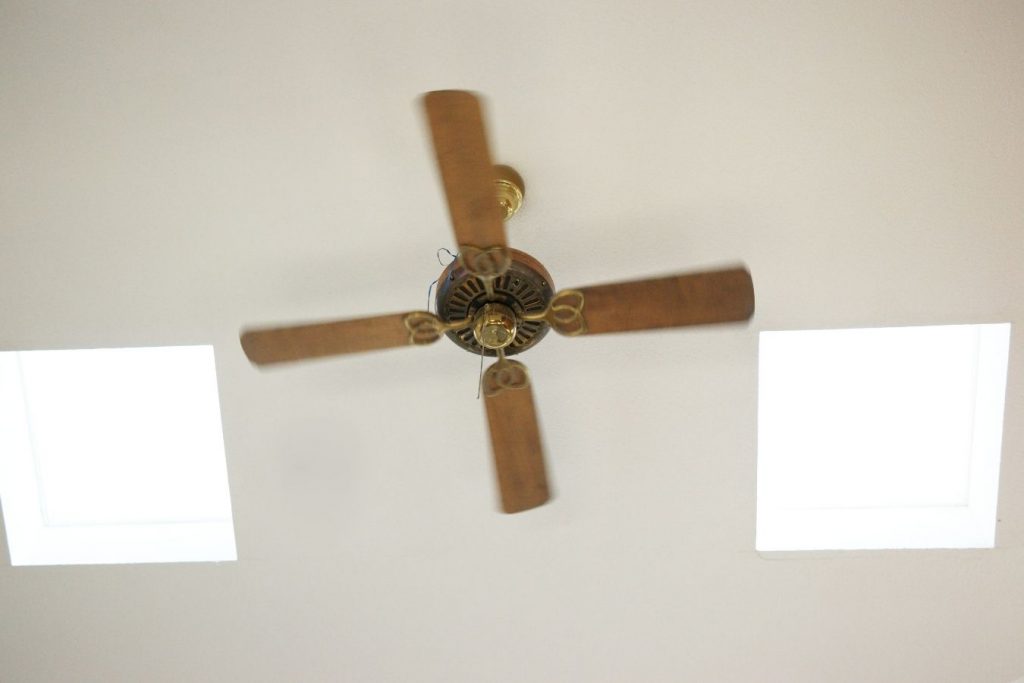It is important to properly ventilate bathrooms as they remain wet and moist the whole time. But often times it is not n easy thing to do due to many building constraints. This post elaborate on how to ventilate a bathroom properly.
The best and easiest way to ventilate a bathroom is by using an exhaust fan or an operable window. A ducted exhaust fan is a great option to ventilate a bathroom that doesn’t have outside access. A ceiling fan along with open windows is best to ventilate a bathroom without using an exhaust fan.
Here is a full list of the most effective bathroom ventilation options;
Using a through-the-wall exhaust fan
Using a through the wall exhaust fan is the best and easiest way to ventilate a bathroom effectively, especially if there are no windows. These fans help to reduce moisture build-up in the bathrooms by moving the moist air outside. According to the building code, you have to use a through-the-wall exhaust fan of at least 50 CFM if used intermittently or a fan of 20 CFM if used continuously to effectively reduce the moisture level.

As you guessed these fans are installed on the wall facing outside. These have to be installed on the top portion of the wall for efficient working. As mentioned before the minimum size of these fans need to be 50 CFM however their sizes increase with an increase in the floor area of the bathroom. A rule of thumb is to use 1 CFM per square foot of the bathroom floor area. So if your bathroom 100 sq.ft in size you will need to use an exhaust fan of 100 CFM. However, if the size of the bathroom is only 40 sq.ft you will still need to use a fan of 50 CFGM since that is mandated in the building code.
Do bathrooms have intake air vents?
For effective ventilation, a room should have intake as well as exhaust vents. But most bathrooms don’t have any intake vents. So if you are using an exhaust fan where will the bathroom get makeup air from? Through the windows. When you are running an exhaust fan it is always recommended to keep the windows a little open so the fresh air from the outside can fill the bathroom.
But what if the bathroom doesn’t have any windows? You can always install some intake vents on the wall in this case. But if you have no way of doing that there is one good option; the bathroom door. Just keep the bathroom door a little open while running the exhaust fan and the moist air in the bathroom will be replaced by the fresh air from the rooms. This also means the loss of some conditioned air however this is a necessary evil.
Using a duct fan: The best option for bathrooms with no outside access
An inline exhaust fan aka a duct fan works just like a through the wall exhaust fan. However, the former type removes moist air through a duct that goes into the attic of the house and then outside whereas the latter removes air through the wall.

Inline exhaust fans are used in bathrooms that don’t have outside access. They are installed on the ceiling of the room. These fans are called inline because they sit inside the duct which connects the bathroom and the outside.
The rules of the building code apply to duct fans as well. They should have a minimum size of 50 CFM if used occasionally and a size of 20 CFM if run continuously.
Duct fans are costly compared to through-the-wall exhaust fans, and they are also costly to install due to all the ductwork involved. The ductwork passes through the attic of the house and into the outside. This outlet can be on the roof, on the wall, or through the soffits of the house. When you have more than one bathroom all the ducts coming out are usually vented through a single final outlet.
Can you vent a bathroom exhaust fan into the attic?
No, you shouldn’t vent a bathroom exhaust into the attic as it is against the building code. The building code clearly states that all exhaust fans from the bathrooms should be vented outside.
Venting the moist air from the bathrooms into the attic, even if the attic is vented properly, will increase the humidity levels there which will cause molds to grow and the condensations can also damage the attic floor insulation.
Using windows
Windows are a great way to increase air circulation in a bathroom. As per EPA building code a bathroom, if it doesn’t have exhaust fans, should have openable windows that are at least 4% of the floor area and no smaller than 1.5 sq.ft.

In practice, the window ventilation is not as effective as using extractor fans. Windows alone cannot provide enough airflow to reduce the moisture level especially if you are living in a humid climate. Think about opening your bathroom windoes in winter, how practical that sounds.
However, if you are living in a hotter climate using windows is the best way to ventilate a bathroom. This is because windows don’t use electricity so they don’t cost anything to run. They also don’t require any maintenance. On the other hand extractor fans run on electricity even if the consumption is low, and they require maintenance once in a while. Windows are noiseless too.
The best way to ventilate a bathroom using windows is to keep them open while showering and then 10 to 15 minutes more. Also, makes sure that the door of the shower cubicle is left open. This will provide sufficient airflow to remove the moist air.
Use a ceiling fan or a pedestal fan
There are many people who will think you are crazy to use a ceiling fan or a pedestal in a bathroom. But that is not a bad idea in many ways. These fans are a good option to quickly reduce the moisture in your bathroom provided it has windows. Ceiling fans and pedestal do not remove moist air on their own, they help to circulate the moist air, venting it faster through the windows. If your bathroom doesn’t have any windows then these fans are ineffective.

Having a fan also helps to reduce the temperature in the bathroom making it more liveable for many people. Some bathrooms get hot very fast, maybe due to heat-generating lightings or weather. I have also heard similar complaints from old people, and they were happy to use a fan in their bathrooms.
When you use a fan in your bathroom make sure that it is a damp rated fan. Ordinary indoor fans cannot endure moisture, they will rust very fast. Damp rated fans are specially designed fans that can work in a moist environment, so they are the ideal option for bathrooms. There are also wet rated fans which can work in areas that frequently get wet, like an open patio, but they are an overkill for a bathroom.
Use a dehumidifier
A dehumidifier reduces the humidity in a bathroom by absorbing moisture from the air which it condenses and collects in a chamber. There are two types of dehumidifiers; desiccant and refrigerant. Desiccant dehumidifiers use materials like Silica gel to absorb moisture while refrigerant type dehumidifiers use a refrigerant for this purpose. For rooms like bathrooms, a refrigerant dehumidifier is the best choice as it can remove large volumes of moisture at a time. Desiccant type dehumidifiers are not heavy-duty type so they cannot remove the levels of moisture a bathroom has.

Dehumidifiers are the best option only if the bathroom cannot have fans or windows. They are not long terms solutions though. Running a dehumidifier in a bathroom can be tedious since you may have to empty the condensed water twice a day.
Some of the popular dehumidifiers for bathrooms are;
Other ways to reduce moisture in a bathroom
The problem with lack of bathroom ventilation is that it will casue molds to grow. There are some methods other than given above to reduce the moisture build up in a bathroom. They are not as effective as any of the 5 ventilation option given above though.
Keep the bathroom door open
Keeping the bathroom door will sidtribute the moist air into the nearby rooms as well but since they are very liklely to have some ventilation this moist air will be removed eventualy. Also spreading moisture to a larger area will reduce the obverall humidity and thus it will prevent the growth of molds.
Shower less often
Personal hygeine is very important but if you can use the shower less often it will drastically reduce the humidity levels in the bathrooms.
Dry the bathroom walls
Drying up the bathroom walls is a proven way to reduce moisture and mold growth. Wipe the walls of the shower cubicle and the tiles with a dry cloth. Trust me, this is easier than it sounds.
Do not keep wet clothes inside the bathroom
The humidity inside a bathroom can be reduced by not keeping your wet clothes in there. The water content in the wet clothes will evaporate and adds to the moisture if they are kept in the bathroom. Even though this doesn’t have a significant effect on the overall moisture levels something is better than nothing.
